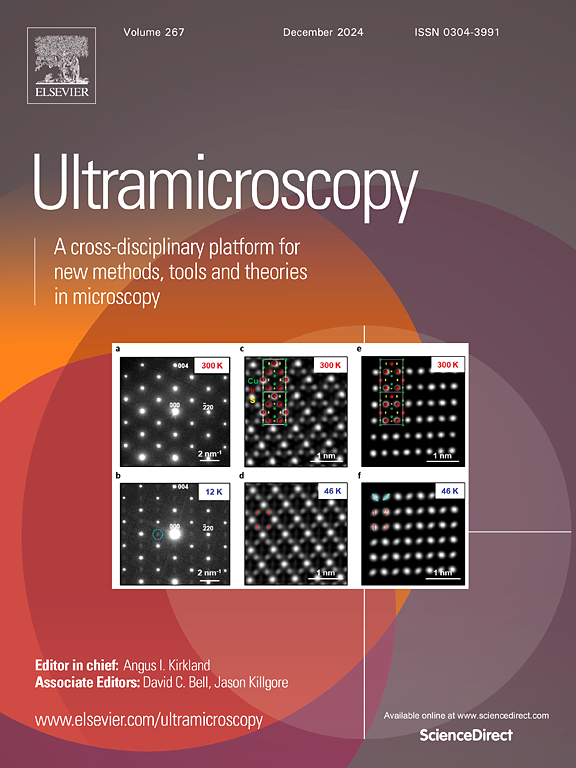双管纳米吸管的电容补偿提高扫描离子电导显微镜的电流检测
IF 2
3区 工程技术
Q2 MICROSCOPY
引用次数: 0
摘要
本文提出了一种利用双管纳米吸管提高扫描离子传导显微镜电流检测响应的方法。通过检测来自每个通道的两个信号之间的差异,电容电流可以被抵消,从而在交流偏置电压(BM-SICM)下工作的偏置调制扫描离子电导显微镜中提高离子电流检测响应并缩短成像时间。此外,该方法可以通过微分运算相互抵消,从而降低双管纳米管相邻两个通道的同步电容电流噪声。因此,即使在直流偏置电压下工作的SICM中,通过降低压电扫描仪的噪声,也可以获得更好的检测信号。正如所提出的方法所证明的那样,在交流偏置电压下操作的BM-SICM中,由于其强负电荷而难以观察到的染色体清晰地成像,而没有表面电荷引起的伪影。此外,在直流偏压下运行的SICM中,成功观察到细胞内短棒、单核增生李斯特菌和Caco-2人肠细胞样细胞之间的动态相互作用。本文章由计算机程序翻译,如有差异,请以英文原文为准。
Capacitance compensation on a double-barrel nanopipette for improving current detection of scanning ion conductance microscopy
We developed a method to improve the current-detection response of scanning ion conduction microscopy (SICM) using a double-barrel nanopipette. By detecting the difference between the two signals from each channel, capacitive currents can be canceled out, resulting in an improved ion current detection response and reduced imaging time in bias-modulated scanning ion conductance microscopy operated with AC bias voltages (BM-SICM). Furthermore, this method can reduce the synchronized capacitive current noise of two adjacent channels of a double-barrel nanopipette by canceling each other via a differential operation. Therefore, an improved detection signal was achieved even in the SICM operated with a DC bias voltage by reducing the noise from the piezoelectric scanner. As demonstrated by the proposed method, chromosomes that were difficult to observe owing to their strong negative charges were clearly imaged in the BM-SICM operated with an AC bias voltage without artifacts caused by surface charging. Additionally, in SICM operating with a DC bias voltage, dynamic interaction among an intracellular short rod, Listeria monocytogenes, and Caco-2 human enterocyte-like cells was successfully observed.
求助全文
通过发布文献求助,成功后即可免费获取论文全文。
去求助
来源期刊

Ultramicroscopy
工程技术-显微镜技术
CiteScore
4.60
自引率
13.60%
发文量
117
审稿时长
5.3 months
期刊介绍:
Ultramicroscopy is an established journal that provides a forum for the publication of original research papers, invited reviews and rapid communications. The scope of Ultramicroscopy is to describe advances in instrumentation, methods and theory related to all modes of microscopical imaging, diffraction and spectroscopy in the life and physical sciences.
 求助内容:
求助内容: 应助结果提醒方式:
应助结果提醒方式:


